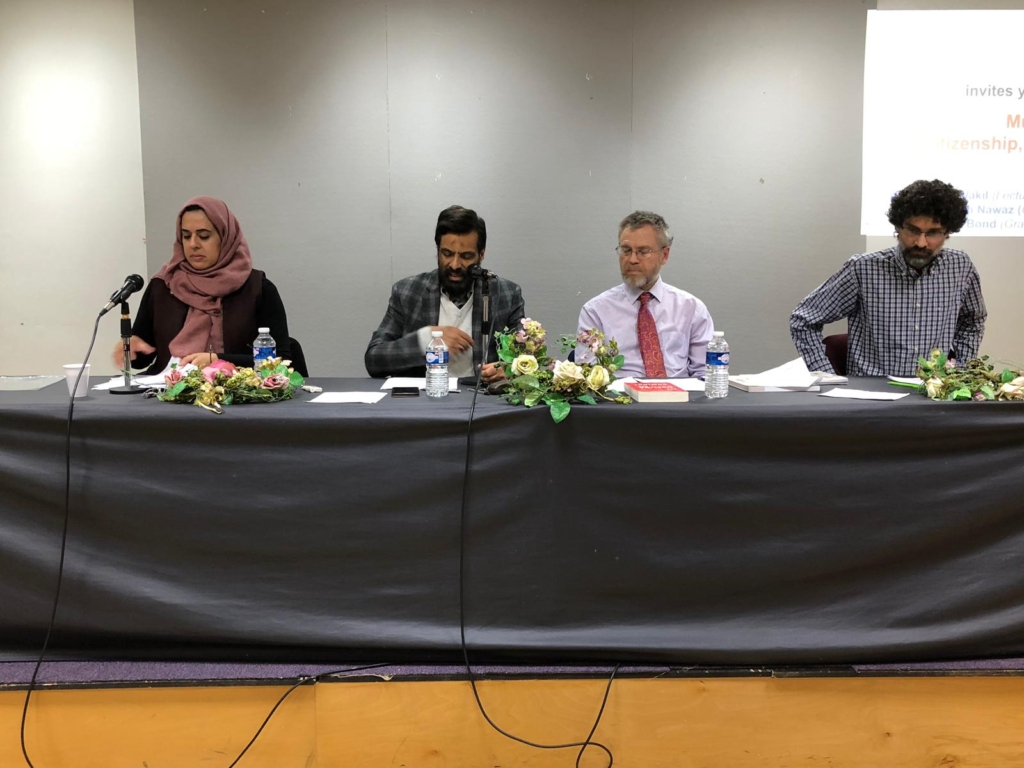While the state mounts an aggressive PR campaign promoting religious freedom led by Prince Nasser, Bahrain is in the throes of a seven-year crackdown on political and religious rights
The kingdom of Bahrain is eager to prove to the United States that it’s a strong ally on religious freedom.
Last year, the crown jewel of the public relations campaign came in the form of Prince Nasser bin Hamad Al Khalifa’s visit to the Museum of Tolerance in Los Angeles, where he issued a declaration from his father, the king, supposedly committing Bahrain to a platform of tolerance and religious rights.
A year later, Bahrain was back at it for the US Department of State’s first Ministerial to Advance Religious Freedom event in Washington hosted by Mike Pompeo. As in LA, Bahrain claimed to be a leader in the global fight against religious discrimination, joining “like-minded” countries in July to extol its purported achievements.
Flagrant abuse
Yet, as former secretary of state Rex Tillerson highlighted when he cited Bahrain as a flagrant abuser of religious freedom in 2017, the kingdom is uninterested in good-faith engagement on religious coexistence. It wants simply to whitewash its abysmal rights record on any world stage it can find.
Beneath the public promises, Bahrain is in the throes of a seven-year crackdown on most fundamental freedoms, both political and religious. Since the 2011 Arab Spring pro-democracy protests – where authorities violently suppressed thousands of demonstrators, killing dozens – the Al Khalifa monarchy has ruthlessly consolidated power by jailing and torturing dissidents.
The government has Nasser and other emissaries selling an illusory version of Bahrain as a model of religious coexistence with a clever sleight of hand
And as they’ve silenced dissent at home, the monarchy has concealed these abuses abroad, taking every opportunity to distract from worsening repression and making a mockery of religious freedom forums in the process.
Prince Nasser’s trip to LA’s Museum of Tolerance is a glaring example of Bahrain’s international Janus face.
He plays a pivotal role in the PR push to obscure Bahrain’s abuses. He’s the poster-child for international sporting endeavours and, increasingly, of the campaign to promote religious tolerance. His many masks include head of the Bahrain Olympic Committee and the Supreme Council for Youth and Sports.
Systematic torture
Beyond his more palatable athletic positions, Nasser is a leader on Bahrain’s Supreme Defence Council and the commander of the Bahrain Defence Force Royal Guard, the elite military unit deployed as part of Saudi Arabia’s catastrophic war in Yemen. Nasser fought in coalition missions accused of war crimes, Instagramming his fun from the front lines.
In 2011, Nasser was directly implicated in the systematic torture of activists, even weaponising his role in the kingdom’s athletics community. As president of the Olympic Committee, Nasser created a special commission to identify and punish more than 150 members of the sporting community for peacefully demonstrating. He even called for “a wall to fall on [protesters’] heads … even if they are an athlete…Bahrain is an island and there is nowhere to escape”, and tweeting: “If it was up to me, I’d give them all life [in prison].”
 Sheikh Hamdan Bin Mohammed bin Rashid al-Maktoum, Crown Prince of Dubai (right), congratulates Sheikh Nasser bin Hamad al-Khalifa, son of the King of Bahrain, after he won an individual category in the Dubai Desert Triathlon on 19 April 2014 (AFP)
Sheikh Hamdan Bin Mohammed bin Rashid al-Maktoum, Crown Prince of Dubai (right), congratulates Sheikh Nasser bin Hamad al-Khalifa, son of the King of Bahrain, after he won an individual category in the Dubai Desert Triathlon on 19 April 2014 (AFP)Allegations went global when a Bahraini refugee presented evidence that Nasser oversaw torture to the British High Court, which ultimately stripped him of his diplomatic immunity in the UK.
Despite the evidence, the Bahraini government refuses to even investigate the prince. He remains a ubiquitous face of the kingdom’s supposed achievements, participating in global Ironman competitions, welcoming the FIFA Congress, and opening the Bahrain Scientific Centre for Sustainable Development Goals.
Shia population marginalised
Now the government has Nasser and other emissaries selling an illusory version of Bahrain as a model of religious coexistence with a clever sleight of hand.
While they’re not explicitly wrong that minorities are greeted with tolerance – Christians, Jews and other small religious populations meet with little of the prejudice found in neighbouring Saudi Arabia, for example – Bahraini officials exploit the discursive focus on minority rights to ignore systematic discrimination against the country’s Shia Muslim majority.
The Sunni ruling family has long worked to marginalise the Shia population and inflame sectarian divisions to maintain political control. Since 2011, the government has dissolvedopposition groups while simultaneously targeting Shia religious leaders, even denaturalisingBahrain’s highest Shia cleric, Sheikh Isa Qassim.
Legislation now bars religious figures from political participation, and the most prominent Shia political leader, Sheikh Ali Salman, is imprisoned solely for giving peaceful speeches. Shia are effectively banned from participation in the security forces and are virtually absent from key ministerial posts.
A year after Prince Nasser launched Bahrain’s deceitful religious freedom campaign in LA, discrimination remains rampant. If the Bahraini government really wants to demonstrate its commitment to freedom and international law, it shouldn’t send messengers like Nasser on disingenuous press junkets – it should send him to court.
– Husain Abdulla, originally from Bahrain, is the founder and executive director of Americans for Democracy and Human Rights in Bahrain. He has a master’s degree in political science and international relations from the University of South Alabama.
The views expressed in this article belong to the author and do not necessarily reflect the editorial policy of Middle East Eye.
Photo: Protesters hold a banner depicting victims of Bahrain’s anti-regime protests in Zurich, Switzerland, on 26 February 2016 (AFP)


